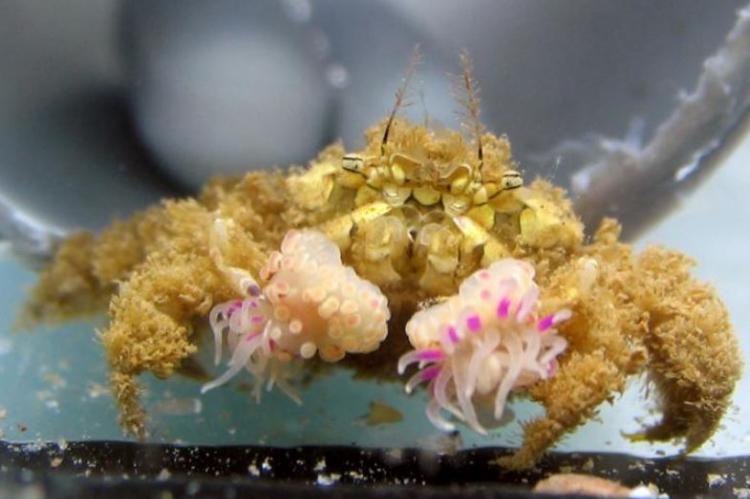Why Lybia crabs always have two sea anemones in hand
Researchers in Israel investigated the Lybia crab's relationship with sea anemones.
Also known as boxer or pom-pom crabs, the small Lybia crabs are always carrying a pair of sea anemones in their front claws. In a study published in the PeerJ journal, graduate students Yisrael Schnytzer and Yaniv Giman studied how the crabs acquired their sea anemones. They were under the supervision of Professor Yair Achituv at Bar-Ilan University in Israel, and Professor Ilan Karplus at the Volcani Center.
After collecting more than 100 Lybia crabs from the shallow waters of the Red Sea, it turned out that every one of them held a pair of sea anemones in their claws. The anemone, identified as belonging to the genus Alicia, is possibly a newly recorded species. The researchers were unable to locate any Alicia without a “crab host”. In their study, a series of experiments were conducted to observe the crabs' behaviour.
The researchers saw that if a anemone was taken from a crab, it would split the anemone in its other claw into two. The anemone would then regenerate into two clones over several days.
In another setup, if a crab without any anemones was placed in a tank that contained a crab with two sea anemones, the crab without anemones would proceed to take one of (or part of) the other crab's sea anemones. Such encounters ended relatively amicably, with both crabs subsequently proceeding to split their sea anemone so that each would then have a pair.
In the final stage of their study, molecular fingerprinting of anemone pairs taken from wild caught crabs revealed that each crab held identical clones. This suggested that the behaviour the researchers had observed took place rather frequently in the wild, and was a means used by the Lybia crabs to acquire their pair of sea anemones.
According to the researchers, the crab's behaviour demonstrated a unique example of an animal inducing the asexual reproduction of another species, thereby affecting its genetic diversity.


